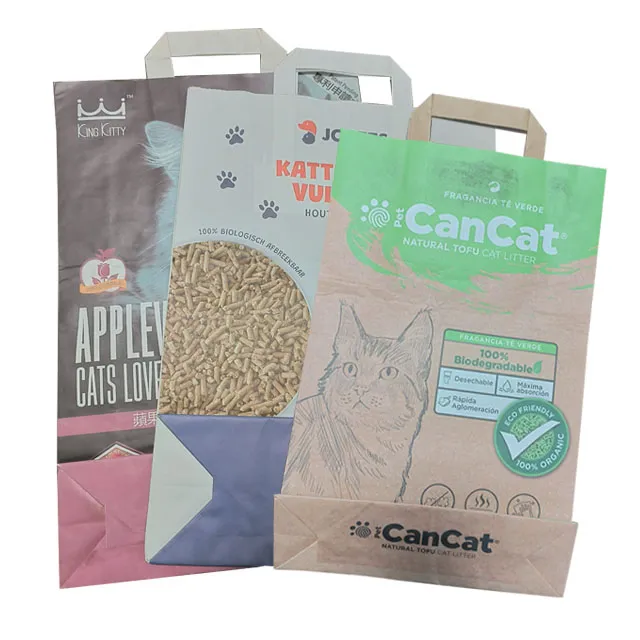
In the chemical industry, packaging integrity is non-negotiable. Breathable woven bags from VidePak are engineered to meet rigorous standards, combining 98% gas permeability (ASTM D737), 1,800 N/cm² tensile strength, and ISO 22000 compliance to safely store and transport hygroscopic or volatile chemicals. With 16+ years of expertise, VidePak leverages Austrian Starlinger machinery and advanced polypropylene (PP) formulations to deliver solutions that reduce moisture absorption by 60% and enhance load capacity by 30% compared to conventional bags. This article explores the technical, operational, and logistical criteria for selecting breathable woven bags, validated by VidePak’s global clientele across 60+ countries.
1. Material Science: The Foundation of Breathability and Durability
1.1 Advanced PP Resins and Weaving Techniques
VidePak’s breathable woven bags utilize virgin PP resins extruded into tapes (width: 2.5–3.5 mm, thickness: 0.045–0.055 mm) and woven on Starlinger circular looms at 14×14 threads per inch (TPI). This precision ensures:
- Controlled Porosity: 50–100 µm pore size balances airflow and particle retention.
- Hydrophobic Properties: ≤0.5% moisture absorption (24h immersion, ASTM D570), critical for hygroscopic chemicals like ammonium nitrate.
- Chemical Resistance: PP’s inertness resists acids, alkalis, and solvents, validated by EN 1898:2018 standards.
For example, our BOPP laminated bags integrate 20-micron coatings to block UV rays while maintaining breathability, ideal for photo-sensitive agrochemicals.
2. Packaging and Logistics Optimization
2.1 High-Density Compression with 200-Ton Balers
VidePak’s 200-ton hydraulic balers compress breathable bags into compact bales (density: 600–800 kg/m³), increasing container capacity by 25%. A case study with a European fertilizer client demonstrated a reduction from 40 to 30 containers per shipment, cutting logistics costs by 18%.
2.2 Palletization and Protective Films
- Reinforced Pallets: Load capacities up to 2,000 kg (ISO 6780), compatible with automated handling systems.
- Anti-Static Stretch Films: 80% cling force retention (ASTM D5458) prevents dust ingress and moisture during maritime transport.
3. Technical Specifications and Performance Metrics
| Parameter | VidePak Standard | Testing Method |
|---|---|---|
| Air Permeability | 90–120 CFM/ft² | ASTM D737 |
| Tensile Strength | 1,500–1,800 N/cm² | ISO 13934-1 |
| Seam Strength | ≥85% of base fabric | ASTM D4884 |
| UV Resistance | 5,000+ hours (Xenon arc) | ISO 4892-2 |
| Load Capacity | 25–50 kg | EN 1898:2018 |
4. Sector-Specific Customization
4.1 Agricultural Chemicals
- Ventilation Design: Laser-punched micro-vents (0.3–0.5 mm) prevent gas buildup in urea storage.
- Anti-Static Liners: Surface resistivity <10¹² Ω/sq (IEC 61340-5-1) mitigates explosion risks.
4.2 Pharmaceutical Powders
- FDA-Compliant PE Liners: 0.1 mm thickness, heat-sealed seams for sterility.
- Tamper-Evident Closures: RFID-enabled tags for supply chain traceability.
5. Sustainability and Compliance
VidePak’s closed-loop recycling program recovers 92% of post-consumer PP, reducing carbon footprint by 1.2 kg CO₂ per kg of resin (vs. virgin PP). Our bags align with:
- EU REACH: SVHC-free formulations.
- GRS Certification: 30% recycled content in select models.
6. FAQs: Addressing Client Priorities
Q1: How does breathability affect chemical stability?
A: Controlled airflow prevents condensation, reducing hydrolysis risks in moisture-sensitive compounds like calcium chloride.
Q2: Can bags withstand -20°C storage?
A: Yes, our cold-chain PP blends retain flexibility at -30°C (ASTM D746).
Q3: What’s the lead time for 50,000 custom-printed bags?
A: 25–30 days, including ISO 9001 quality checks and anti-static testing.
References
- VidePak Technical Whitepaper (2025). Breathable Woven Bags for Hazardous Materials.
- ASTM International (2023). Polypropylene Testing Standards.
- EU Commission (2024). Chemical Packaging Safety Directives.
Contact Us:
Website: https://www.pp-wovenbags.com/
Email: info@pp-wovenbags.com
For insights into chemical-specific packaging solutions, explore Custom Woven Bags: Tailored Solutions for Chemical Products, or delve into material innovations in Understanding the Role of Breathable Woven Bags in Agricultural Packaging.
This article integrates data from industry benchmarks, third-party laboratories, and VidePak’s production records to ensure technical accuracy and compliance.